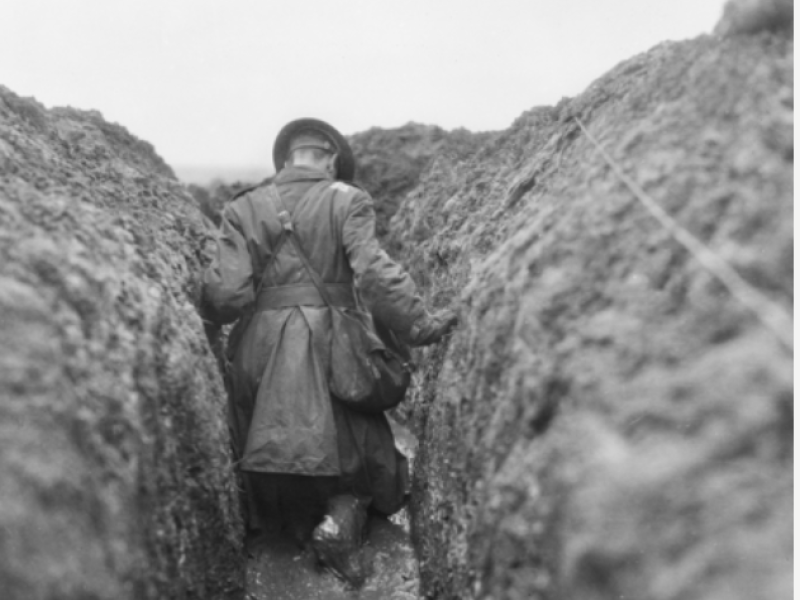Private Frank Reynolds, 55th Battalion, AIF
Frank Bishop Reynolds was born in 1884, the youngest of nine children of Walter and Ann Reynolds of Lake Bathurst in southern New South Wales.
After attending state school, Frank worked on the family property “Somerton”, settled by the Reynolds in the 1860s, and was partner in the family firm. Described as broadly built, dark, clean-shaven, and knowing all about horses, Frank was “a favourite with all who knew him”.
Frank enlisted in the Australian Imperial Force at Victoria Barracks in Sydney in January 1916, sailing for England with the 55th Battalion reinforcements. After four months of training on the Salisbury Plain near Wiltshire, Frank joined the 55th in France in November 1916 in the line near the village of Gueudecourt.
By that time, the bitter Somme campaign had ended and the Germans and the British were holding positions for the winter. The Australians held the line between the villages of Flers and Gueudecourt, where the cold, rain, mud, and frostbite proved far greater enemies than the German army, though they were periodically shelled.
The 55th Battalion rotated in and out of the front line with other units of the 5th Australian Division, and spent most of January 1917 resting in camp at nearby Bernafray Wood. After a brief spell near Dernancourt, the 55th returned to the Gueudecourt sector, occupying it until German troops abandoned their Somme defences and began withdrawing to the Hindenburg Line 40kms to the west.
Throughout late February and early March, the 5th Division took part in the advance that followed, fighting a series of engagements with German rear guards left behind to delay the British advance.
One of the actions fought by the Australians during this period was the 55th Battalion’s costly but successful pre-dawn assault on the village of Doignies. Frank’s platoon attacked a beetroot factory, coming under intense rifle and machine-gun fire as they moved to encircle the village. Once the Germans withdrew, their artillery opened up on Doignies with high explosives and shrapnel as the 55th Battalion worked to consolidate their newly-won positions.
Technically a success, the 55th Battalion’s attack on Doignies came at the cost of 181 men killed, missing, and wounded.
Among them was Frank Reynolds, who was last seen lying dead in the approaches to the village.
Although most of those killed were buried at nearby Lebucquiere, Frank’s final resting place was never formally determined. As such, his name appears on the Australian National Memorial at Villers-Bretonneux among the 10,737 Australians killed in France who have no known grave.
Frank’s death had a tremendous impact on the Reynolds family, but his loss was also felt in small community of Lake Bathurst. A newspaper article announcing his death described Frank as “deeply respected and esteemed in the Lake Bathurst district”.
A sanctuary was added to the small, local church by the Reynolds family featuring a substantial stained glass window of the ascension of Christ bearing Frank’s name.
Aaron Pegram, Historian, Military History Section
- Australian War Memorial https://www.awm.gov.au/collection/C2278405

 Australian War Memorial
Australian War Memorial